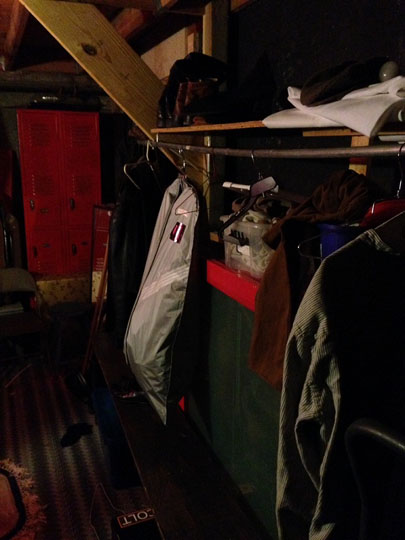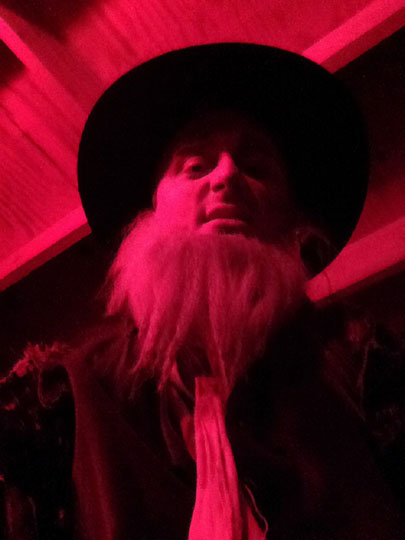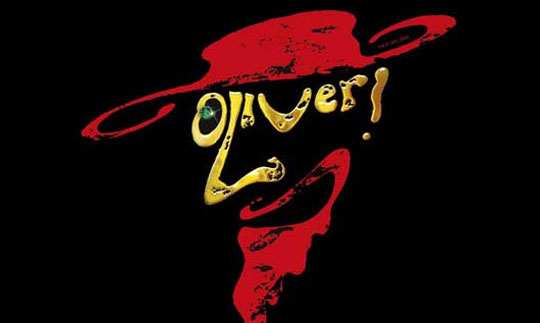In 1838, Charles Dickens published his second novel, the epic story of an orphan boy born into poverty, forced to live in a workhouse only to escape and fall into a life of petty crime—Oliver Twist. Most (if not all) of us are at least vaguely familiar with Dickens’ tale, written in reaction to England’s politics and society, specifically of its “Poor Laws” of the day.
One of Dickens’ most distinctive creations appears in Oliver Twist in the form of a "merry old gentleman" with a vicious dark streak, the pickpocket known only as Fagin. Named from a friend Dickens knew in his youthful days as a boot-blacker, and possibly inspired by a notorious “child stealer” of the times, he is the leader of the group of children with whom Oliver falls into company. Fagin teaches the children to make their livings by pick-pocketing in exchange for a roof over their heads and “earning their keep”
Described as grotesque, Fagin is a self-confessed miser who does nothing to improve the squalid lives of the children he takes in (despite the money and goods they bring him) and cares far more about the fact that they do not "peach" on him.
The story of Oliver Twist has been told on stage and screen many times, most notably in the 1960’s, when Lionel Bart created “Oliver!”—a blockbuster stage musical that proved to be a huge hit on Broadway and especially in England, and the lush film version won the 1968 Oscar for Best Picture, cementing its place as a certified classic.
In any adaptation, the meaty role of Fagin has always attracted top actors—Lon Chaney, Alec Guinness, Ron Moody, Richard Dreyfuss, Ben Kingsley and recently on the London stage, Rowan Atkinson (a.k.a. Mr. Bean) have all at some point in time put their own spin on the “merry old gentleman.”
And now—it’s my turn! Yes! As far back as my youth when I was first introduced to Oliver in 5th grade music class, I’ve found Fagin a fascinating character, and it so happens that right now, through February 16th, I get my own shot at “picking a pocket or two” in Peoria Players Theatre’s production of “Oliver!”
It’s not every day you get to take on such an iconic and complex Dickensian character—I’ve always believed the best roles are the ones that allow you to disappear and make the people that know you the best forget that it’s you they are watching.
Fagin is made somewhat humorous and whimsical in the musical, but both the director Bryan Blanks and I agreed that there is a damaged, dangerous streak always lurking just below the surface with him—you can see this in several interpretations of the character that have been presented in film and television.
His depiction in the novel and some earlier film portrayals have also been controversial and deemed largely anti-Semitic, but the musical (thankfully) downplays this aspect of the character. Since early November, I’ve been considering all aspects of this character-how he will walk, how he will talk, how he reacts to others, and especially, how others will react to him.
Getting into the character of Fagin is quite a process—In addition to reaching the right level of “grotesqueness,” I am also faced with the challenge of being (presumably) decades younger than Fagin’s intended age, and I’d say in far greater health. This show has been consuming most of my very little free-time lately, and coupled with the fact that this weather squanders the opportunity to cover much else right now, I thought covering my “transformation” might make for an interesting Saturday post here on MBIP.
So here’s where we begin—backstage at the theatre. Typically, actors here at Peoria Players dress in the basement dressing rooms—but a cast that boasts over 70 actors makes for cramped quarters, so a storage room on stage right has been annexed for a few of us, making for quieter, less crowded, but also slightly cramped dressing quarters. Fagin’s costume requires (like his personality) many layers, and the first few go on before heading down to makeup…
Sitting down in the makeup chair, the next vital stage of this transformation begins with the hair. In case you can’t tell, I spent a lot of time on my hairstyle before hopping in the makeup chair…ha.
I’ve gone without a haircut for several months so that hair extensions could be clipped in to give me a proper “Victorian Mullet”. For added flair, several strands even get braided. What can I say, Fagin has his own “style”…
Wrinkles are applied to my forehead, jowls, and anywhere else that needs a little aging by the show’s makeup designer Amy Williams. While she and our crew of costumers are not only responsible for making my 70 other cast mates look their absolute best, she’s also in charge of making me look my absolute worst.
While I now look fit and ready for a tractor pull or monster truck rally, we still have a ways to go in the Fagin-making process...the visible hair gets sprayed, while the rest will get covered by a “skullcap.”
A tangled, wispy beard (but still much more full than anything I could actually grow if I tried) is added with spirit gum, which is not always the easiest or friendliest thing to remove from the skin, but I won’t need to worry about that until much later in the night. After the beard, it’s fake eyebrow time, applied directly over my real eyebrows. And spirit gum is even less forgiving when applied on actual hair…try to rip them off? YEOOOOWWW!
A few more layers of age and grime are added, and the last “touch’ to the makeup is several coats of tooth black and “nicotine stain” applied to my teeth to give me chompers worthy of a life lived in Victorian squalor.
It’s all topped off with the signature hat and long threadbare jacket-soon its pockets will be filled to the brim with colorful scarves and Fagin’s other “pretty things.” The complete look creates a silhouette intended to not only repulse the audience, but also draw them in with curiosity. He may be repulsive, but I like to think he’s also quite intriguing.
However, the look of the character can only serve you so far—as I touched on earlier, what you do with your voice and body to transform is equally as important. For the last week or so, I’ve come home every night with back and shoulder pains from Fagin’s stooped, shuffling walk. About halfway through the first (fairly long) scene, the pain starts shooting down from the middle of my shoulders, and I must remember to ignore it.
The raspy, Cockney voice which can sometimes go from hoarse to shrill, also has to be comfortable enough to sustain speaking and singing for the show’s two hour run time (several offstage breaks allow for breaks and hydration). It’s important to always remain conscious of your physical self, in order to maintain consistency in your performance.
My first appearance in the show comes late in the first act, directly after a huge production number, the showstopping “Consider Yourself” in which the majority of the cast appears onstage. I take this quiet, uncrowded backstage opportunity as time to “get into” my walk (a lazy sort of lumber that I’ve deemed “the Fagin Shuffle”), and also grimace a few times to make sure everything that’s been added to my face will stay attached. As soon as everyone else comes running backstage, It’s showtime for me! Sometimes I get so caught up in what I’m doing, that it’s not until I’m back offstage that I can even process all of it. Playing this role has been everything I had always hoped it would be.
In fact, performing can be rewarding for many reasons, the chicks being just one of them. Here, Fagin takes a break from hanging out with the boys to fight off the ladies…if you’re a single guy, get involved in theatre—you will typically be outnumbered about six to one!
The characters crafted by Charles Dickens in his novels are steadfast staples in a pantheon of great literary icons whose names and characteristics have become common in our everyday language—we sometimes refer to any stingy person we meet as a “Scrooge,” and “Fagin” even appears in the dictionary as “an adult who instructs others (as children) in crime.” Indeed he does, and his influence resonates not only in the children, but over the whole story, whatever incarnation of it you happen to see.
I am only one of well over a hundred people—onstage, backstage, and kid wrangling-that are working to make “Oliver!” a great show, and many of them have put in far more time and effort than I have to make this show a success—my contribution is just teeny-tiny in the grand scheme of things.
To see all of it in action, there are several chances to catch “Oliver!” at Peoria Players Theatre, through February 16th. “Consider yourself” invited!
Tell them Fagin sent you.
Peoria Players Theatre
Lakeview Park
4300 N University
Peoria
309-688-4473
facecrack page
Related Posts: Westlake Cinema Paradiso, Over The River and Through Goodfield—Or—There’s Snow Business Like Barn Business! and “People Come And Go So Quickly Here..."


















